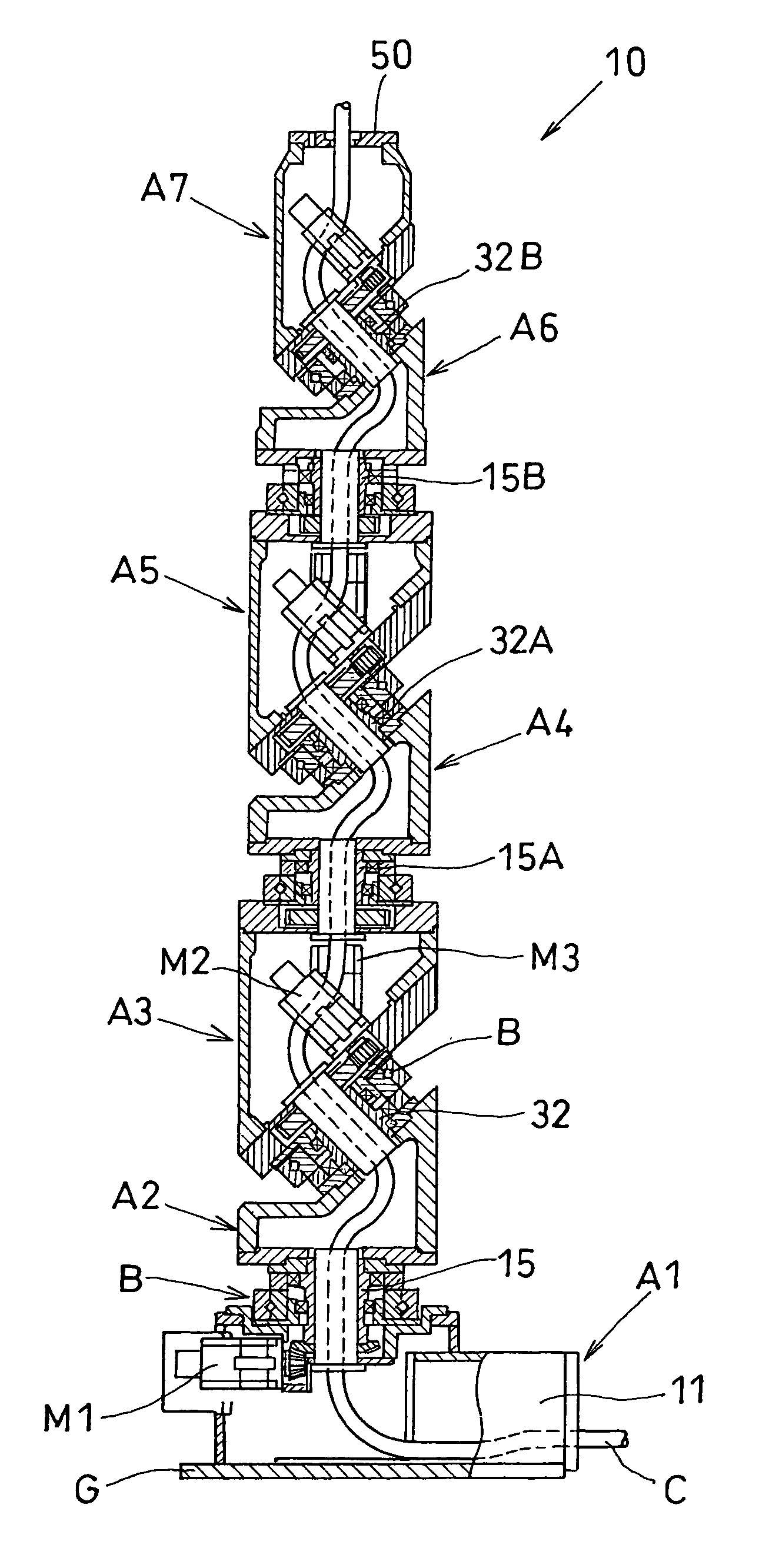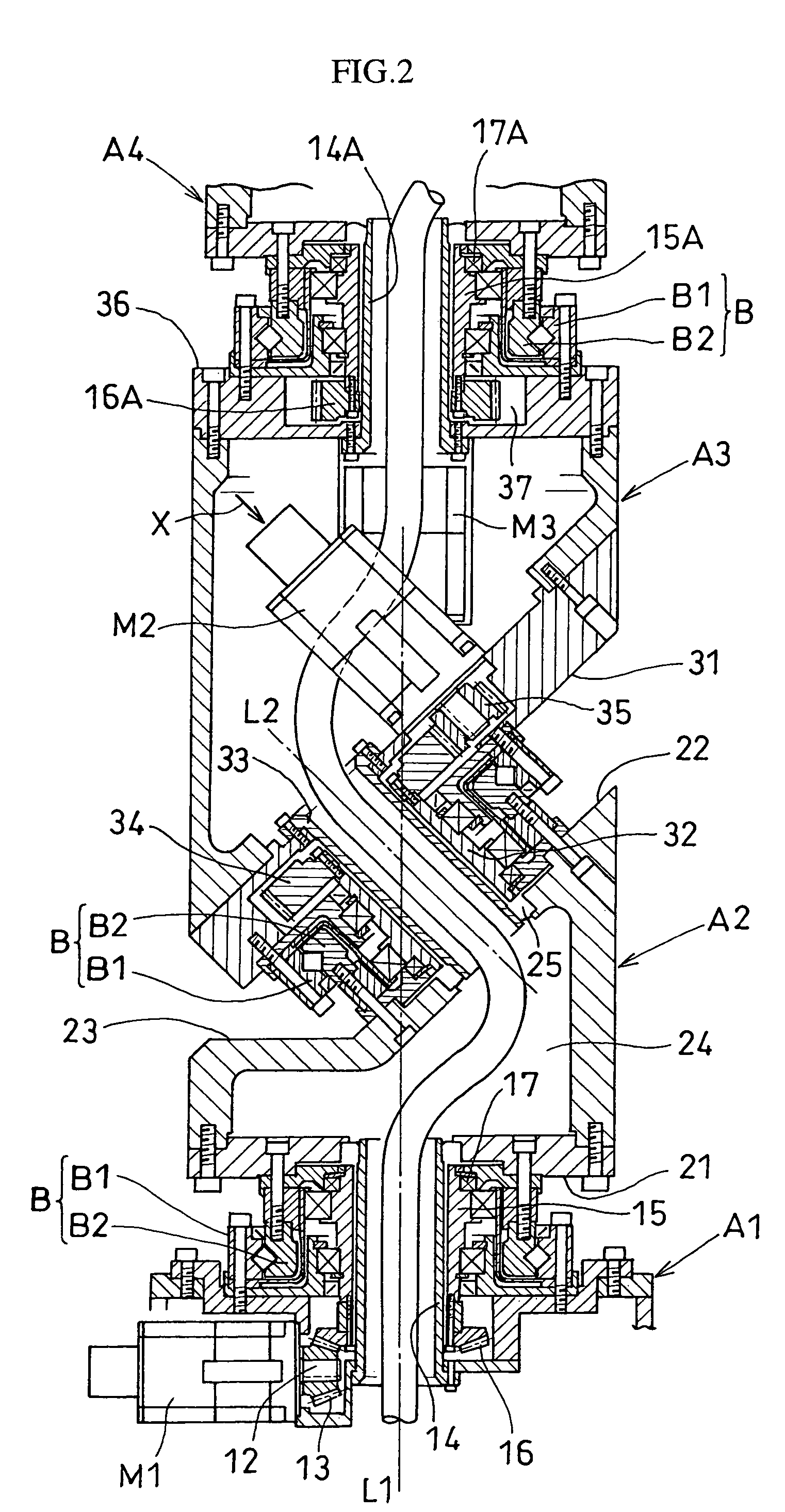Articulated robot
a robot and articulation technology, applied in the field of articulation robots, can solve the problems of limited environment in which the robot can be used, the robot cannot function as a robot by itself, and the difficulty of arranging a plurality of robots close to each other, so as to reduce the space necessary for the movement of the robot, eliminate interference with the surroundings, and ensure the effect of safety
- Summary
- Abstract
- Description
- Claims
- Application Information
AI Technical Summary
Benefits of technology
Problems solved by technology
Method used
Image
Examples
Embodiment Construction
[0026]Hereafter the present invention will be described by referring to embodiments. FIGS. 1 and 2 illustrate an articulated robot 10 according to one embodiment of the present invention. In this embodiment, the robot has six joints and seven joint arms. A first joint arm A1 is fixed on a base G to function as a machine table. It is provided with a motor M1 as a driving power source and an introduction opening 11 for cables. The motor M1 has built inside an encoder and a braking device. The motor has a rotating drive shaft 12 disposed in a horizontal direction, and a bevel gear 13 is mounted on the tip of the drive shaft.
[0027]A hollow fixed shaft 14 is vertically disposed in the first joint arm A1, and a horizontal rotating shaft 15 (corresponding to “a first rotating shaft” of the present invention) is fitted about the shaft 14. A bevel gear 16 is mounted at the lower end of the horizontal rotating shaft 15 and is engaged with the bevel gear 13 mounted on the rotating drive shaft ...
PUM
 Login to View More
Login to View More Abstract
Description
Claims
Application Information
 Login to View More
Login to View More - R&D
- Intellectual Property
- Life Sciences
- Materials
- Tech Scout
- Unparalleled Data Quality
- Higher Quality Content
- 60% Fewer Hallucinations
Browse by: Latest US Patents, China's latest patents, Technical Efficacy Thesaurus, Application Domain, Technology Topic, Popular Technical Reports.
© 2025 PatSnap. All rights reserved.Legal|Privacy policy|Modern Slavery Act Transparency Statement|Sitemap|About US| Contact US: help@patsnap.com



